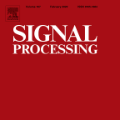Photoacoustic (PA) imaging is a biomedical imaging modality capable of acquiring high contrast images of optical absorption at depths much greater than traditional optical imaging techniques. However, practical instrumentation and geometry limit the number of available acoustic sensors surrounding the imaging target, which results in sparsity of sensor data. Conventional PA image reconstruction methods give severe artifacts when they are applied directly to these sparse data. In this paper, we first employ a novel signal processing method to make sparse PA raw data more suitable for the neural network, and concurrently speeding up image reconstruction. Then we propose Attention Steered Network (AS-Net) for PA reconstruction with multi-feature fusion. AS-Net is validated on different datasets, including simulated photoacoustic data from fundus vasculature phantoms and real data from in vivo fish and mice imaging experiments. Notably, the method is also able to eliminate some artifacts present in the ground-truth for in vivo data. Results demonstrated that our method provides superior reconstructions at a faster speed.
翻译:光声成像(PA)是一种生物医学成像模式,能够在深度获得比传统光学成像技术更深得多的高对比光吸收图像。然而,实用仪器和几何测量限制了成像目标周围现有声感传感器的数量,从而导致传感器数据的紧张。常规的PA图像重建方法在直接应用到这些稀有数据时提供了严厉的文物。在本文中,我们首先使用一种新型信号处理方法,使稀有的PA原始数据更适合神经网络,同时加快图像重建。然后,我们建议注意Steered网络(AS-Net)利用多功能聚合进行PA的重建。AS-Net在不同的数据集上得到验证,包括来自Fundus血管血管的模拟光声学数据以及活性鱼类和小鼠成像实验中的真实数据。值得注意的是,该方法还能够消除地铁中存在的用于维生数据的一些文物。结果表明,我们的方法能够以更快的速度提供更先进的重建。



